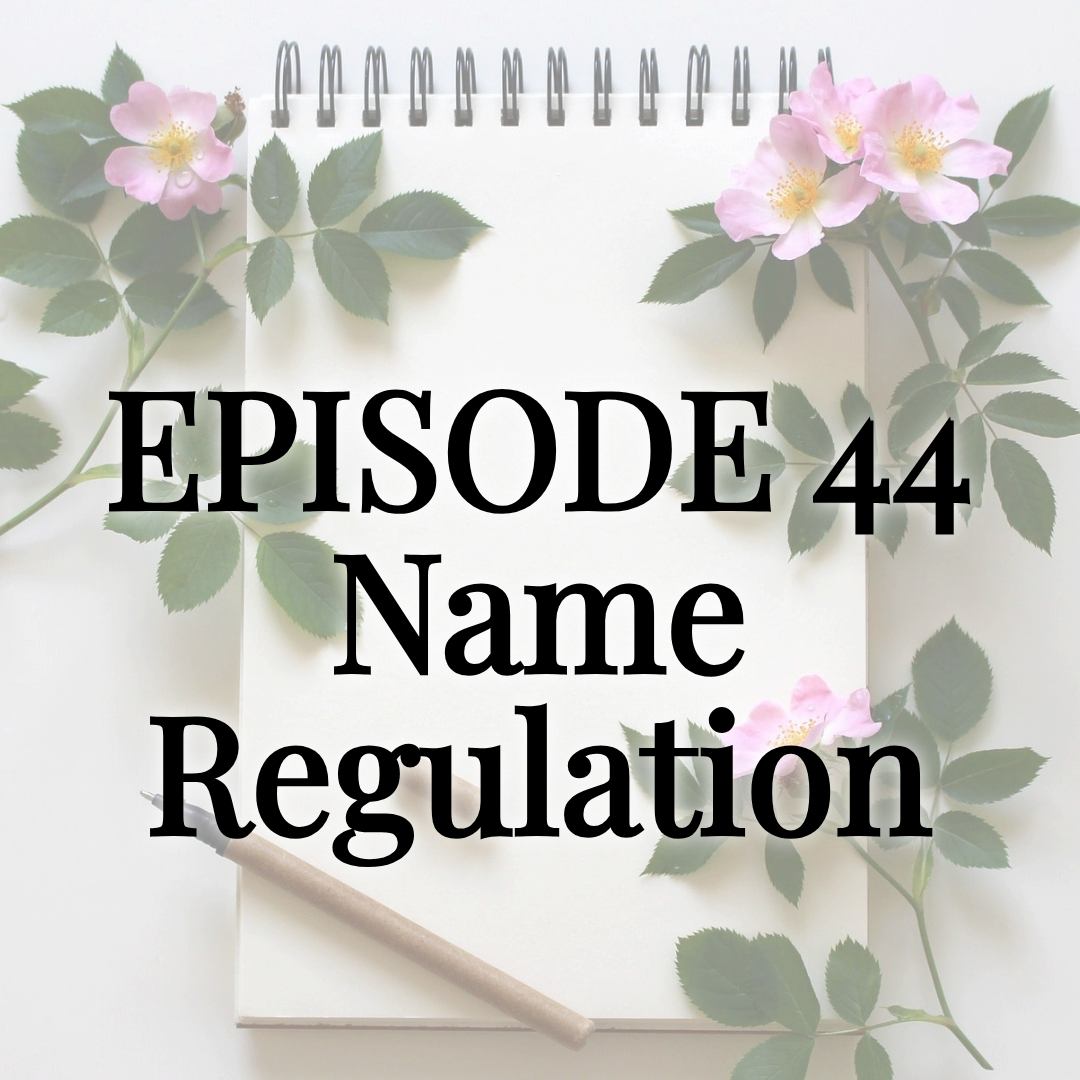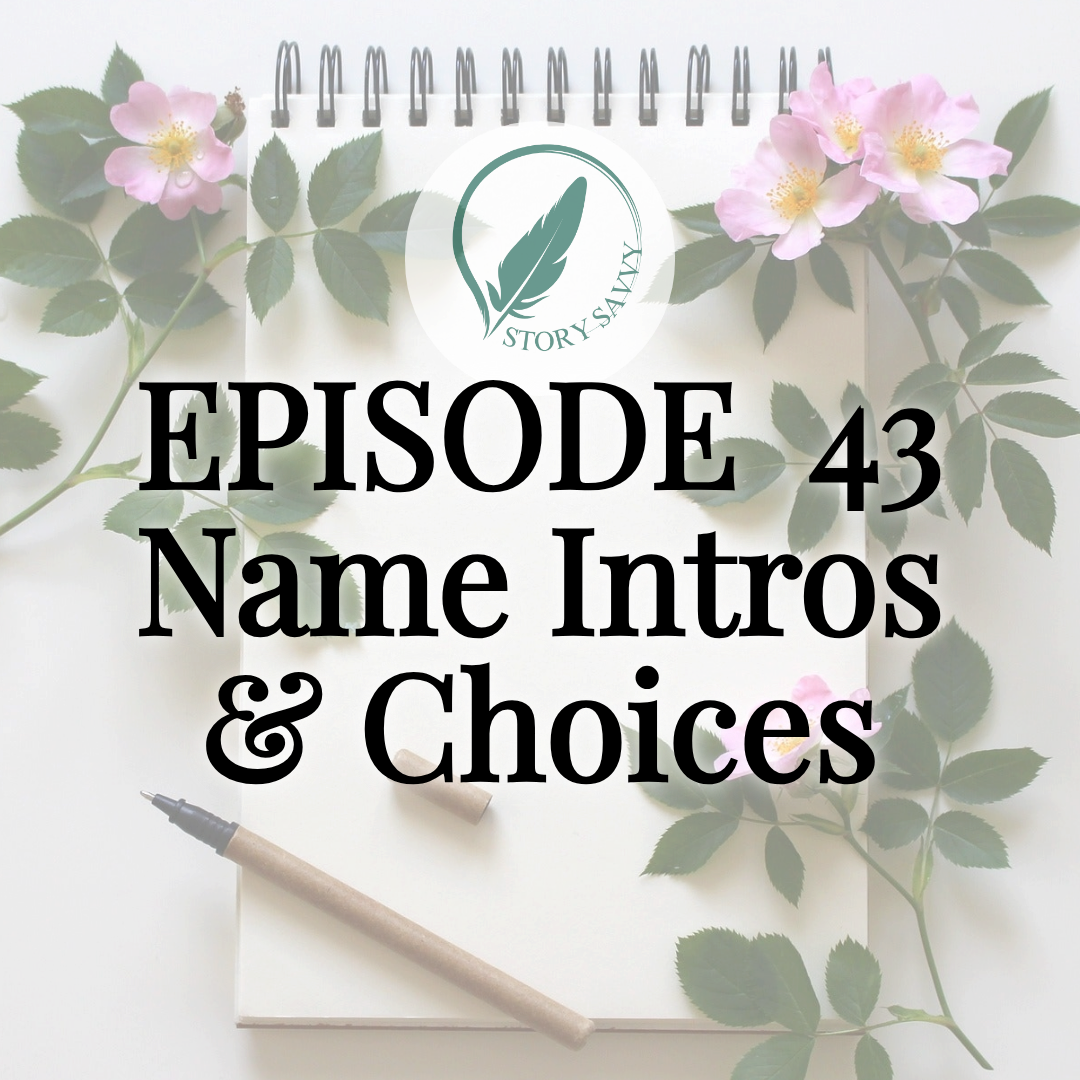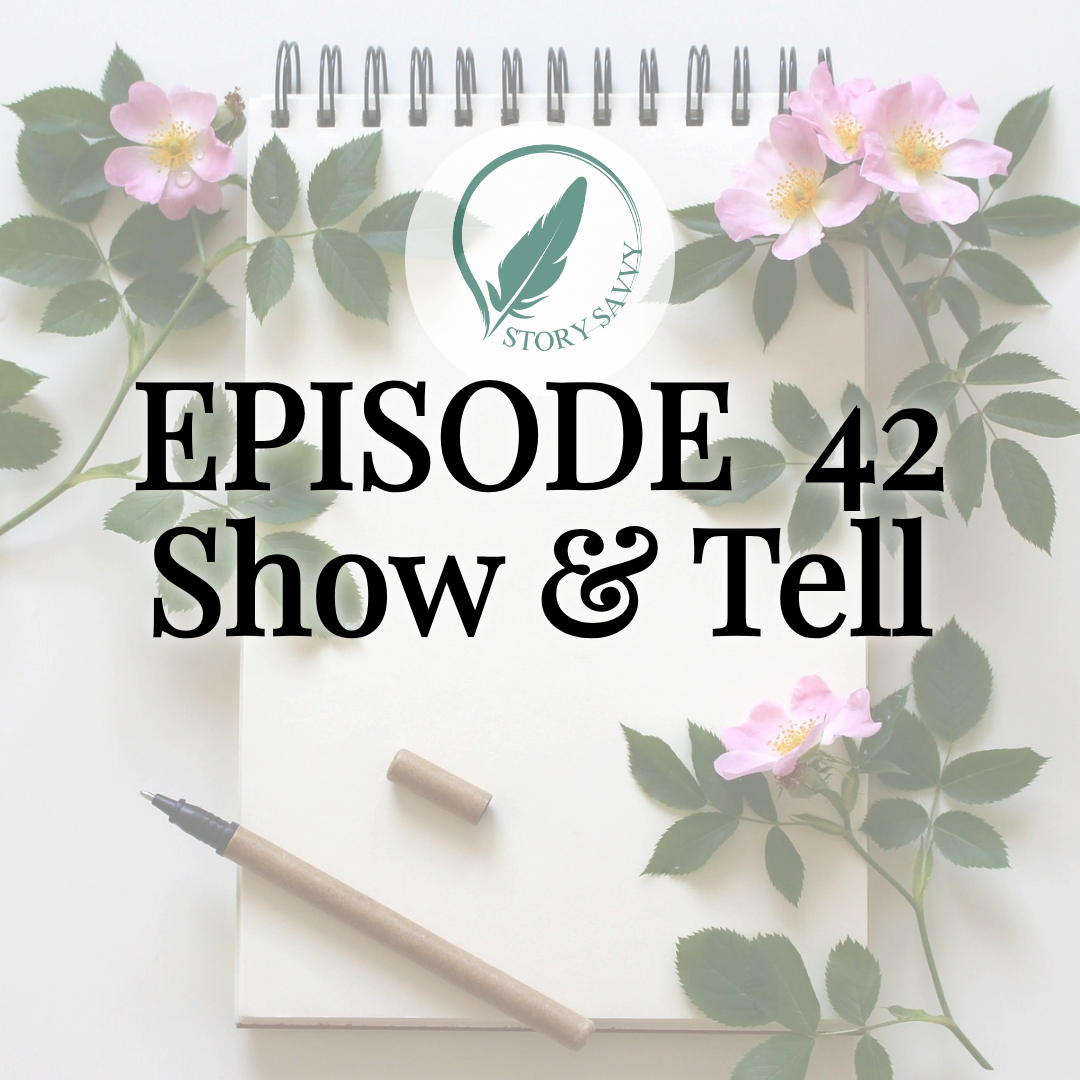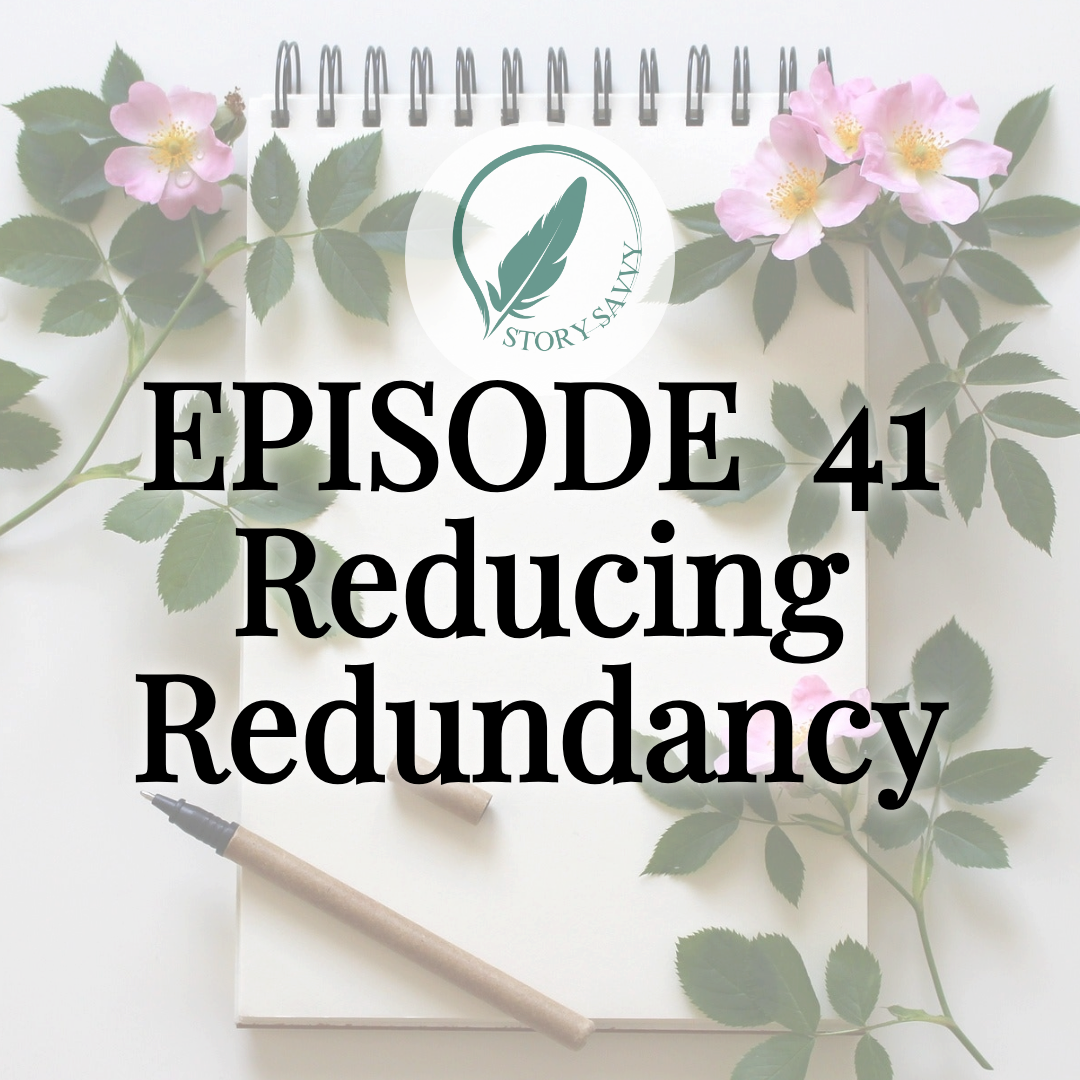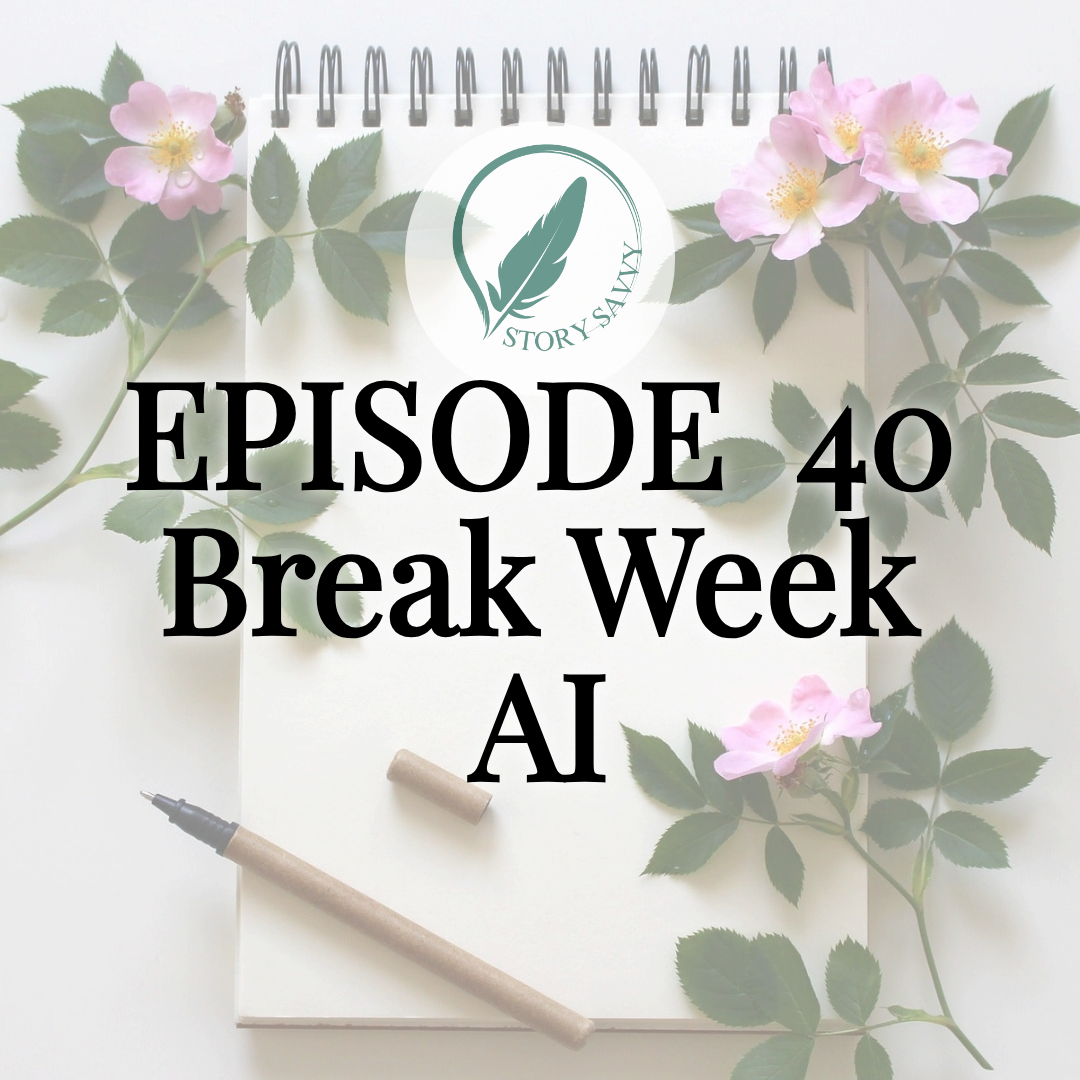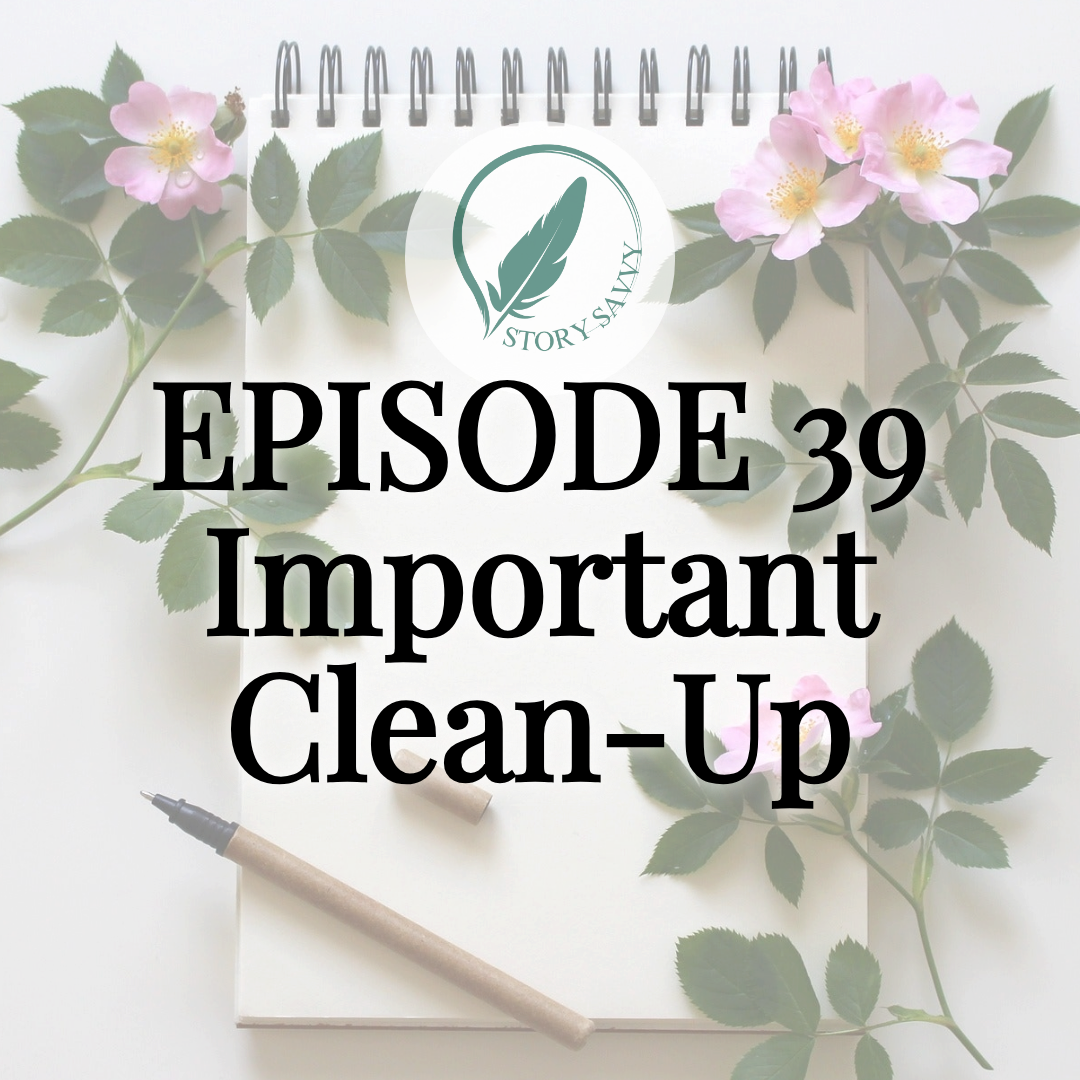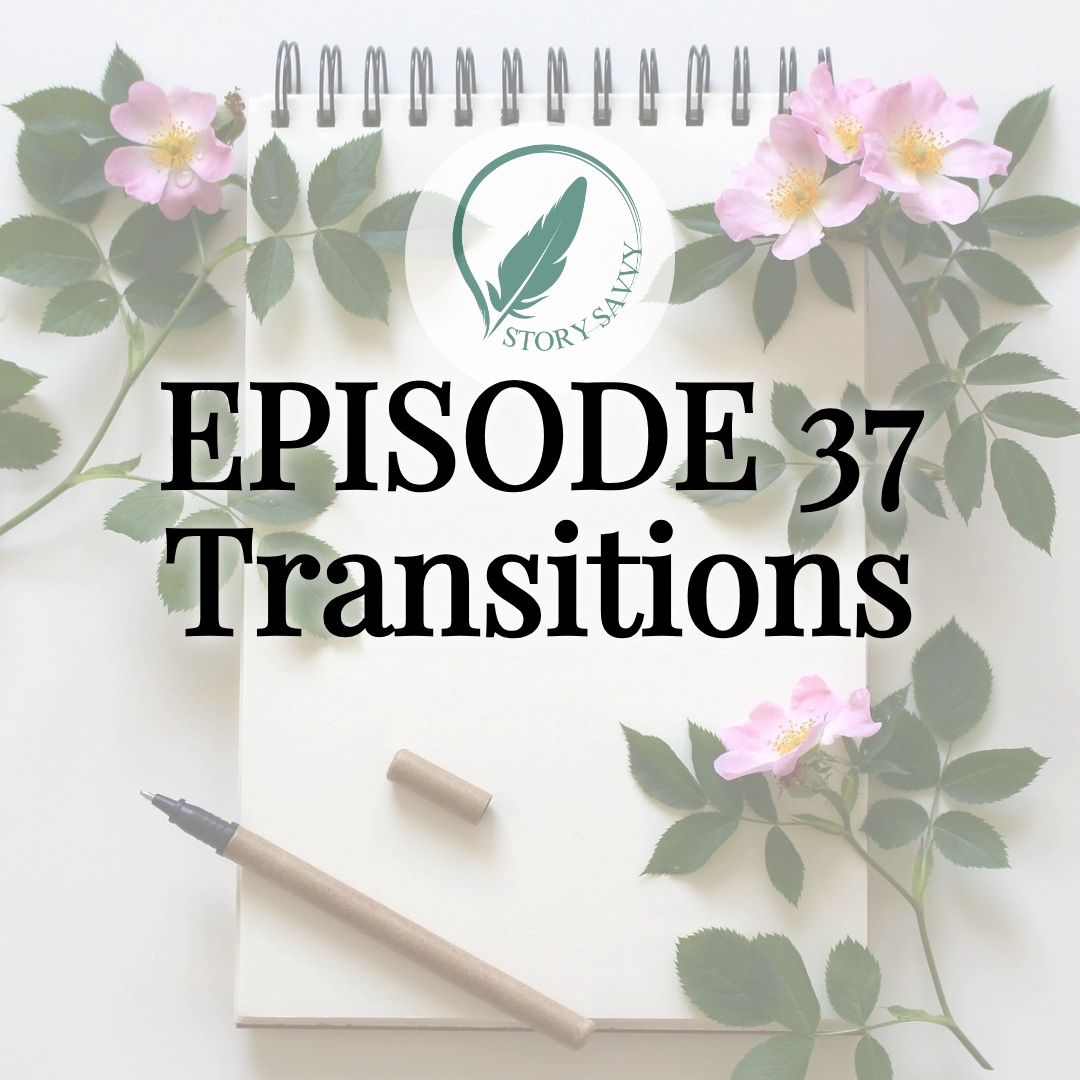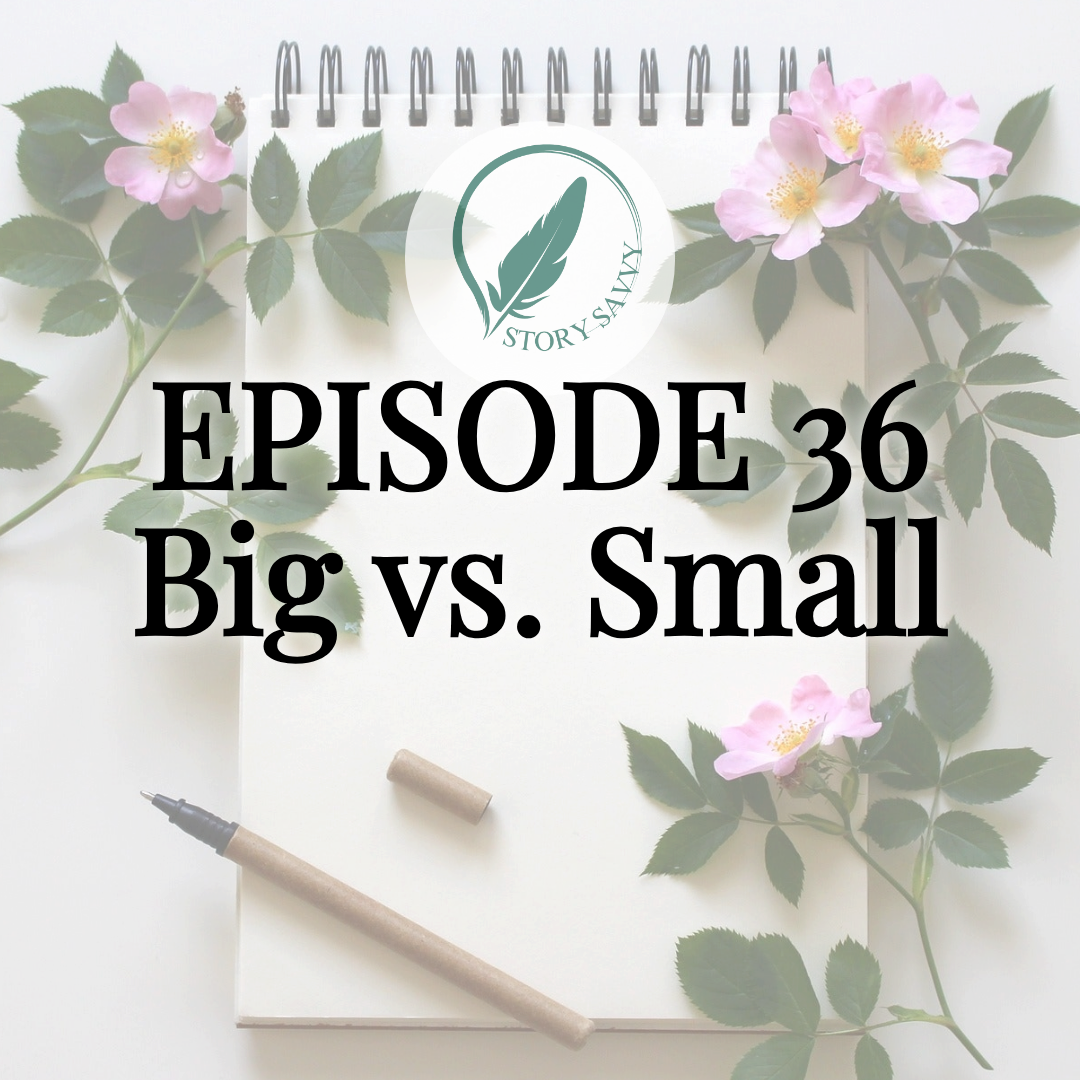Plot Twists: Story Savvy Self-Editing Episode 23
Episode 23 Overview:
Plot Twists
"Do I have at least one big twist in the story? An unexpected event or revelation that twists a significant belief or truth? Are my twists positioned well in the story for my genre and reader expectations?"
Do you want to learn how to write a great plot twist? In today’s writing podcast for authors, we talk about how to improve story writing skills, specifically writing a good plot twist and spotting plot twist mistakes in self-editing.
This week in the Story Savvy Series, we explore the mechanics behind powerful plot twists and how to improve or add them. From foreshadowing to genre expectations, developmental editor Rebecca Hartwell [hartboundediting.com] and author Agnes Wolfe [authorsalcove.com] guide writers through crafting plot twists that truly land.
Episode 23 of the 52-Week Story Savvy series offers a detailed breakdown of what makes a twist effective. Whether you're writing fantasy, literary fiction, mystery, or anything else, this episode will help you craft moments that shift your story’s direction and resonate with readers.
They also discuss:
- Defining what really counts as a plot twist
- The best places to use your biggest reveals
- Mistakes that make twists fall flat
- Subtle but effective foreshadowing
- Why genre matters in deciding what plot twists to include
- The emotional impact of twists on characters (and readers)
If you’ve ever worried your plot twists were predictable—or too much—this episode brings clarity and confidence to your editing process.
Recommended Resources:
- Hart Bound Developmental Editing Services – [https://hartboundediting.com]
- Authors’ Alcove Membership Community – [http://authorsalcove.com]
- Book Giveaway – [http://authorsalcove.org]
See you next week for episode 24: Consequences & Processing
Episode 23 Transcript:
Plot Twists!
Rebecca Hartwell: Hello and welcome to the Hart Bound Editing Podcast. This is episode 23 of the weekly Story Savvy series where we tackle the 52 biggest self-editing topics and tips to help you make your good story great, as an aspiring author asks me, a developmental editor, all of the questions that you have wanted to. We have covered a bunch in this series so far, including last week's episode talking about mental health and self-care as writers and, you know, during the self-editing process. Today we are going to take a look at plot twists. By the end of this episode, you'll hopefully all feel confident defining your plot twists, checking them against your genre, deciding where you might need to put more in, and making sure that they all pay off well. Joining me to ask all of the questions is my friend and co-host Agnes Wolf.
Agnes Wolfe: Hi. I am an aspiring fantasy author who hopes to release her first middle grade fantasy later this year. Or actually, I'm now leaning more towards next year. And also, I am the host and founder of Authors Alcove. I'm here today to tackle plot twists with you and specifically how to self-edit around them.
Though I think most people know what a plot twist is, I always think it is a good idea to start with defining what exactly is considered a plot twist. Rebecca?
Rebecca: Sure. So, while an unexpected event from the arena, or the antagonist, or a secondary character can sometimes be a plot twist, more often it's a moment where the protagonist was wrong about something that really impacts how or in what direction they can move forward. So, in romance this could be the protagonist's friend turning out to be a rival for the love interest, or learning something about the love interest that deeply changes how the protagonist sees them, for better or for worse. In thrillers, this is often that the antagonist has more leverage or more power than the protagonist was understanding or was prepared to cope with when opposing them. And in a performance plot, a big twist plot twist might be that the protagonist's belief that they have no limits in their training for the big day and can just keep pushing forward gets broken along with their ankle, for example.
So, the defining properties for a plot twist, how I would present them are these. Number one, the twist does not come from the protagonist, but from some force or character outside of them and outside of their control. Number two would be there is a clear pinpoint moment of reveal. Ideally one sentence or one paragraph that you can point to as “that right there is the plot twist. That's where things get flipped.” Number three is it is unexpected enough that the protagonist needs a moment to adjust Be that in their mindset or their emotions, or their goals, their plans, anything else that's important.
Fourth requirement is that it upsets some expectation or prediction that the reader held ideally alongside the protagonist. This one comes with a little bit of a caveat because you don't have to surprise the reader for it to work as a plot twist, but it does need to surprise the protagonist. So, it's great if you can do both. But don't stress yourself on surprising the reader. If they can see it coming, that means that you're doing a good job of setting it up, and that's okay.
The fifth and final requirement for what defines a plot twist is it has to fundamentally change how the rest of the story after that can proceed. If the plot twist doesn't change anything, it doesn't change how the protagonist pursues something or what they are pursuing, or who they are pursuing it with, or anything like that, then it's not really a twist because nothing came of it, if that makes sense.
Agnes: Definitely, that makes sense. So, I know like in my favorite genres, which are generally fantasy, dystopian, whatever, there's usually a plot twist and usually it's a little bit bigger one. Is a plot twist important for all genres or are there different plot twist expectations for different genres?
Rebecca: Absolutely. So first, they don't all have to be big. And I'm glad that we're addressing this early on in the episode. Plot twists do not have to be enormous, but I realize that that's going to be a lot of what we are talking about today, talking about those global climax sort of plot twist moments.
But every story, regardless of genre, should have at least a couple of small ones, and a mix of big and small ones for the genres where that's appropriate is always a good idea. So, for your question specifically, yes, plot twists are important at all genres, but to widely, wildly varying degrees. Each genre is going to have different expectations around how big the plot twist should be, how many are needed to satisfy those specific readers, where to put them in the story, and so on.
Some genres, such as mystery or others like you mentioned, absolutely mandate at least one huge plot twist right in the climax, or maybe leading up to it, as well as a handful of really noticeable smaller plot twists throughout the story. It's an expectation of the genre. Others, such as literary fiction, for example, have much lower expectations, to the point where readers probably don't even think about plot twists being part of that genre. But having small scene-level plot twists here and there is always going to help with interest, investment, and everything else. For example, even the worst literary fiction book I've ever read, which was actually for the Authors Alcove review group that we were doing for a little while.
Agnes: I know which one you’re talking about.
Rebecca: Yeah, it still had some well executed plot twists towards the end, and they were some of the only redeeming features of that story to my perspective.
So regardless of your genre, you're going to have a spectrum of what's expected and what's acceptable. And again, knowing your genre and going back to some of your favorites and just making a mental note of the plot twists you can come up with is going to help you gauge whether or not you're meeting those expectations.
Agnes: And for the record, I actually did like that book. I want to make that clear. We disagreed, but I know which one you're talking about because actually when I was preparing for one of our future episodes, I'm going to be referencing that exact same book because I remember how you felt about it and I think we're going to be actually talking about why it did not work. And maybe you might actually be touching on it this week too.
But anyway, so in my first book, my biggest twist comes at the very end, when you realize that a character is not who they really think they are. And I know you talked about some of them needing to be at the end and then being smaller, so that's good.
But when should a plot twist, like the big plot twist, happen? Should this happen at the same beat or a point in a story? Or can it vary?
Rebecca: Again, know what's expected in your genre. For a huge plot twist, one that turns the entire world or the protagonist's mindset on its head, it's often best to put it at one of the big three story moments in the global story, namely: the turning point, which I will often refer to as the midpoint shift in the crisis, which can overlap with the Dark Night. So, it's the big moment where the protagonist realizes that they were significantly wrong about something. Or in the climax. If it's a big plot twist, it's going to feel like a big moment in the story, so, lining it up with where you intended the big moments in the story to be is good advice. For smaller plot twists, I suggest putting them in at one of those three moments, but at the scene or chapter level, not at the global level. So, at the chapter turning point, or crisis, or climax, which you might also be looking at as the core event. Lastly, plot twists generally work better later in a story rather than earlier.
The longer you have to build up the front end of the of the twist before flipping it, generally, the better it will land. I don't want to discourage folks from using small plot twists throughout if that's what they're going for, if that works for their story, but thinking of the distribution roughly as a bell curve coming up gradually through the first half, peaking through the climax, and then tapering off back down through the resolution can be very helpful in deciding where you want to put them.
Agnes: So, I know, I think one of the main reasons you were not really a big fan of that one book is because there were seeds, so to speak, or like little hints towards plot twists that never actually ended up happening. Plus, there were plot twists that happened that didn't necessarily have enough evidence. So, I know that those are some of the things that you're probably going to discuss.
But as an editor, what are some of the most common mistakes you see authors do when they try to do a plot twist unsuccessfully?
Rebecca: So those two are great to start off with of; setting up a plot twist that never happens, or doing a plot twist that never got set up. So, some other common mistakes might be it comes across like Deus ex Machina, which I would refer folks back to episode 20 for, and that can overlap very heavily with that plot twist that never got set up kind of approach.
Another might be that the protagonist doesn't treat the plot twist like a plot twist, and they just continue on as expected. If your protagonist isn't giving your reader cues of, “hey, this was a plot twist, something just got flipped on its head,” then the reader isn't going to get that impression from that plot point or conversation or whatever it was.
And then lastly, the mistake is that there was never any buildup establishing that the protagonist knew, thought, or believed option A before the twist reveals that things are actually option B. So, it feels like you're just establishing the facts.
This is a little bit hard to describe, so let me try to give an example here. Let's say that in chapter 10, you want to reveal that the protagonist's friend is also trying to seduce the love interest. That's only a plot twist if before chapter 10, you have solidly established that this friend is a good friend to the protagonist and swearing up and down that they aren't going after the love interest. If, however, this friend doesn't really have this conversation or set up expectations otherwise, then when you get to chapter 10, it's not a plot twist, it's going to come across just as, “oh, okay, that's how things are.”
So, making sure that you've set up a belief in one direction before you twist it to the other is really, really important.
Agnes: And I feel like foreshadowing is an essential part of that, I think. How can we make sure that when we hint towards a plot twist that we're doing so subtly, not so obvious, but also obvious enough that it's not too subtle, if that makes sense.
Rebecca: Yes, practice is a big part of this, but yes, surprising but inevitable is the phrase that I will try to keep bringing up in regards to this, and that idea of having things only clear when you look back at it. So, a couple of pointers for that would be:
Number one, stay very grounded in your protagonist's point of view and let them misinterpret the facts or the hints, make them certain that they are correct right up until that twist, when they realize that it was their own fallibility, and false beliefs, and mistakes that got them on the wrong path, despite the truth being right there to be seen if they just interpreted correctly.
Second suggestion would be: seed that foreshadowing on the peripheries only. Only mention those hints in passing, or dismissively, or off to the side of whatever core conversation is happening in a given scene. Essentially, include all of the hints that you want, but don't ever let your protagonist look directly at them, metaphorically speaking. Be that in their literal POV, what they are literally describing they are looking at, or in what they are taking the time to think about, or talk about, or having things affect their goals and their decision making. Keep everything off to the side.
Pointer three would be make sure that every hint for the foreshadowing you provide is tied to something in the moment which has nothing to do with the eventual twist reveal. So if your twist is going to be that the antagonist kidnapped the protagonist's wife in a thriller, connect the fact that this wife is not answering the protagonist's phone calls with being because of a big fight they had in chapter one that got him kicked out or whatever, so that when he's calling her and she's not picking up, he's only associating that with the fight, with the interpersonal conflict until it's revealed, “oh, that's not what the cause was.” So, giving a plausible excuse in the moment that is incorrect but believable can be a great way to sort of misdirect while still clearly foreshadowing things that are to come.
So essentially, all three of these pieces of advice, any other that I might come up with, are: use the limitations of your point of view choices very intentionally, as readers are well trained to match their thinking, their priorities and expectations to those of the protagonist when done well, which you can use to your advantage when you're trying to set up plot twists without giving them away.
Agnes: So, what are some signs that your plot twist was well done? So, we kind of talked about like the mistakes because I know that we are often very in love with our own words and our own story and we know things very well. So like, to us, everything seems well executed until we have other eyes on it. How can we look at it and say, “oh, this is well executed,” or signs it isn't needs fixing?
Rebecca: Sure. So, most of this episode is about mistakes to watch for. So, I'll try to just answer that question of: how can you look at a plot twist and know that it's fine, you don't need to work on it.
First would be a plot twist is well executed when it genuinely shocks the protagonist, and their shock feels grounded and realistic in that moment. This can be at the level of their whole world is now falling apart, or it can just be at the level of “well, this made my day,” or “this ruined my day,” kind of level, depending on how big the twist is and how big the reaction can be in connection. The point is that it has to have some little moment of “I was not prepared to deal with this and now I have to.”
The second point to look for is a plot twist is probably working well if it forces the protagonist to regain their balance in some metaphorical way, and it changes the way that they move towards their end goal from that moment in a clear way. Even if it's a small clear way.
Third point is it's probably working well if you as the writer have built up clear understandings and beliefs to the contrary of the truth, through your protagonist, so that there is an established belief, or reality, or truth to then flip upside down in the twist. And again, this applies to the huge twists and the tiny ones.
Fourth suggestion or way to spot this is: your plot twist is probably working if the amount of buildup and foreshadowing, emphasis, reaction, everything like that to the twist are proportional with the impact the twist reveal has on the protagonist's internal self—so, their beliefs and emotions—or the impact that it has on the external world so the plot and the arena that they are playing it out in.
Fifth marker to watch for would be: your plot twist is probably working if the twist can't be ignored. Once it happens, it is reacted to, acted on, or actively navigated in some other way and the protagonist cannot avoid engaging with what was just revealed or what just happened.
Lastly—for trying not to repeat myself too much here—a plot twist works when it can't be undone. When the reveal or action is permanent in some way. And, even if the protagonist can return themselves or their world to equilibrium on whatever scale is relevant, it has to be by pushing forward and can't be done, accomplished—that return to equilibrium—by reversing the twist in some way. So, for example, trying to clarify this, if the twist is that a friend is actually the villain, the protagonist can over time redeem the villain and rebuild a friendship with them if that's the direction you want to go. But they cannot become friends again by immediately forgetting or ignoring the fact that the friend hurt them and betrayed them in the first place in that that twist reveal. Otherwise, it's not going to land right. I know that this isn't super clear or tangible, but hopefully that's still helpful.
Yeah. So, if a, if a plot twist is working in at least most of these ways, if not all, then that's a pretty good sign that you've got it pretty solid and you can spend your time and energy elsewhere.
Agnes: I think one of the things that really stuck out to me is when you said it cannot be reversible. That like really stuck out to me. But I do want to ask is it possible to have too many plot twists? I have heard readers say that they felt like they got whiplash, and I don't know if that's what they're referring to while reading. What number of plot twists should we aim for? And is it possible to have too many?
Rebecca: Sure. So, if someone were to give me the feedback that they were getting whiplash, that's not the first thing that I would reach for, but we'll hopefully cover that in other topics.
So, to answer your question specifically, absolutely. You can't have too many plot twists if you are trying to do a noticeable significant plot twist in every chapter or anywhere near that often in a full-length novel, it's too many. For subgenres and niches with the lowest plot twist expectations, like literary, like contemporary romance, things like that, I recommend one to three plot twists.
For most middle-ground genres—it's a bell curve, so a lot of genres fall in the middle ground—I recommend three to five solid, tangible, nameable plot twists.
And then for plot twist centric genres and subgenres, I recommend at least three, but probably no more than about ten. And that's for the genres where ‘twisty’ is the goal with Very few twists, it's not a twisty book. With roughly three to seven twists or so you can make the book seem twisty if that's what you're going for. But once you go over that curve and have too many twists, the very fact of twists is going to start feeling predictable, and expected, and boring and there's going to start paying off less, and less, and less, and start feeling more exhausting than rewarding. So, I suggest looking at strengthening the twists that you have or adding just a couple more if you want some really good, strong, plot twists for whatever reason, rather than simply trying to add as many as you possibly can to try to meet that same, maybe, impression of your story or pay off for your readers.
Agnes: So, I feel like plot twists can be very foundational to your story and that having a plot twist is going to affect so many other parts of your story. What other aspects of a story are most closely connected with plot twists? And I'm thinking like, what might we mess up if we aren't careful in creating the plot twist or the other way around?
Rebecca: I'd say keep an eye on a small handful of things.
Number one is your intensity and everything I went over around that in episode 18. Making sure that you're maintaining whatever flow you wanted to with your plot twists, whether you're adjusting them or adding them in account.
Number two would be: it very much affects your protagonist's character arc. So, make sure that the twist fits the escalating progression of that protagonist's change progress, and where they are in their arc at that moment when the twist happens.
Third would be: your antagonist or your force of antagonism. Make sure that your twist is a good fit with how you have designed them and how you want them to pay off. And I most often see a mistake around this in that there are too many reveals of the antagonist. Someone is trying to use more than one twist reveal that the antagonist is in fact the antagonist. If you really want it to be impactful and pay off, you get to do that once, so make sure that it works well with the whole antagonist’s character arc and where you want each thing to happen.
Lastly, probably just make double sure that you aren't creating or missing any plot holes around any given plot twist. And make sure that if a reader really picks apart the whys and hows of the twist once they get there, it's at least very hard for them to find a small plot hole around it. That's about the most most can hope for.
Agnes: So, I know we need to wrap up here, but I do have one last question for you. Is there a well-known plot twist that you feel has been widely accepted as great by readers? Or on the flip side, is there a well-known plot twist that you felt… lacked, for your readers and why?
Rebecca: So, I don't have any books coming immediately to mind, but the Star Wars plot twist of “Luke, I am your father,” is a fantastic example of a perfectly executed plot twist. And everyone's seen it, so I'll use that as my good example there. Why I feel like it works so well, is that it totally breaks the protagonist's worldview in that moment. It flips the power dynamic, and the balance of power, and the assumed alliances between these main players on its head in a snap. And it profoundly affects how the story goes on from that point for the protagonist and for the world. And it is instantly accepted in canon without too much mental strain. When people are watching those movies, they don't go, “that's not believable,” they go, *gasp*, because it was set up enough and it's believable and it's grounded, but it's still a big shock. So that's my good example.
As far as bad twists go, I don't think that I have an example here because I'm not sure that I would see a failed plot twist as such. I don't think that I would read the page or the paragraph or the sentence and go, “oh, this was supposed to be a plot twist, but it failed.” It's far more likely that I would define that moment as a character acting unrealistically if they are reacting like it's a plot twist when we all saw it coming a mile away and it doesn't pay off that way. Or I would define it as deus ex machina, or a spot where the intensity needs to be brought up to a higher level. Or I would define it as withholding too much information from the reader when the protagonist clearly knows more than they're letting on. Anything like that.
So, when a plot twist doesn't work, it's usually for a definable reason beyond “this plot twist didn't work,” which my brain is much more likely to latch onto.
Agnes: So, I think what I hear from you is—I know I have often said that whenever I talk to development editors, they often say that our editing needs to be a lot smaller than like we generally think. And I know, like, when you do say, I cannot say do…
Rebecca: Deus ex machina.
Agnes: Yes, yes, that word. I'm just gonna say deus, because that's all I know. So, I know, like… back up here. So, I think that as a writer, if we do end up having like a beta reader or our development editor point out something like saying that it is a deus ex machina, *laughter* that that that might be a cue to us that we didn't set up our plot twist well. That's kind of what I'm hearing from you. Would you agree with that?
Rebecca: I am definitely one of those developmental editors who generally tries to reassure writers and authors that the changes don't take as much as you might think. I don't recommend rewriting your manuscript from scratch. I don't think that is called for 99% of the time. Fixing something like a climax, massive plot twist that doesn't pay off right—whether that is the reader and protagonist can see it coming since the midpoint, or deus ex machina, where it didn't get built up enough—it is absolutely a matter of dropping in a couple of words here and there and shifting how one scene plays out to illustrate a mindset shift or a goal establishment for your protagonist. It is very much a sentence here and a paragraph there and taking something here and moving it there and tweaking a sentence. You almost never have to go back to the drawing board. It's more a matter of taking what you want to do and what you actually have on the page and finding the maybe one, maybe twenty spots where you just need to draw a little bit of a link between that ideal and the reality. That's very much all it takes. So, I'm really glad you brought that up.
Agnes: Yeah. Well, I'm actually pointing out from my own, like, self-editing my own book from your developmental editing is like, there were, there have been a few times where I'm like, “oh, I don't think I set that up. That's why she says this.” And so, and I don't have to do much. I just am like, “okay, so what can I do?” And then I end up going back into my manuscript and just adding little details here and there. So that's why I'm actually thinking of my own work when I say that.
Rebecca: That works great for this podcast. So, I'm all into it.
Agnes: Well, thank you so much for your insight. It has helped me so much. Anyway, I've been really appreciating and loving this entire series.
Rebecca: Awesome. Well, next week we will go over consequences and processing in our stories. So, kind of the other side of that plot twist moment, you've got buildup and foreshadowing, and then you've got consequences and processing. So, we'll be talking about the other side of that mountain next week to make sure that you know, you can check to see if you have enough, if you have too much, and if it's working well in your self-editing.
For now, I would really like to thank everyone for following along with this series. We would really appreciate it if you could help us out by liking and subscribing to the Hart Bound Editing Podcast and the Author's Alcove Podcast, where you can find lots more content for fantasy authors and readers beyond this joint series. I'll see you next week.
Agnes: Can't wait to chat next week as well. See you then.
Rebecca:
Thank you so much for listening to the Hart Bound Editing Podcast. I look forward to bringing you more content to help you make your good story great so it can change lives and change your world. Follow along to hear more, or visit my website linked in the description to learn how I can help you and your story to flourish.
See you next time!


